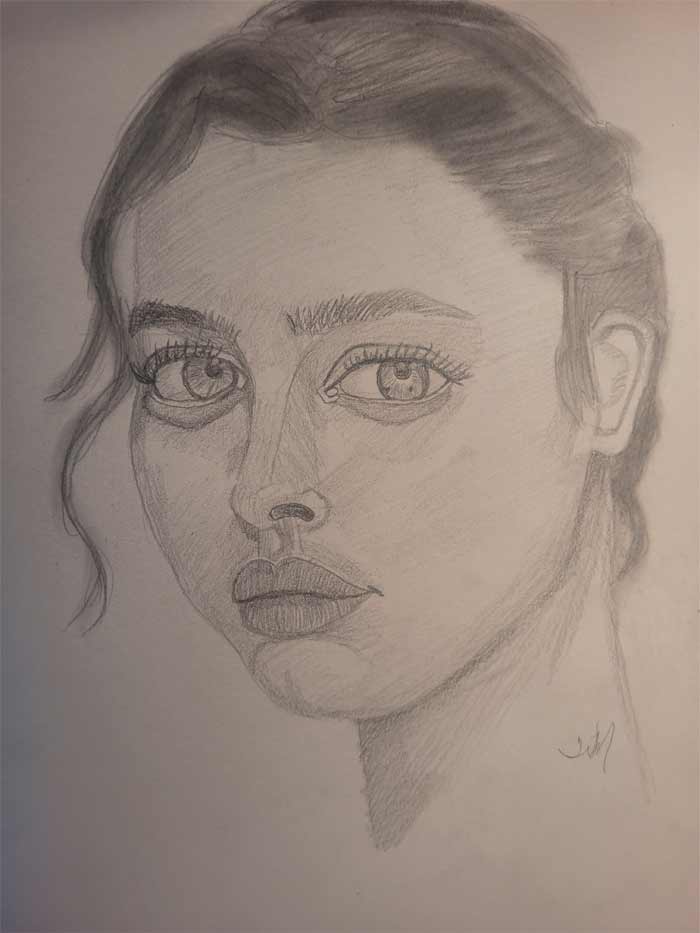Portrait by Wendi, Drawing Academy student
I drew this portrait using constructive drawing principles. I think this one is more on point. Please ignore the shading on the neck. I’m still working on rendering. I hope I did this one better. Thank you for your time.
Wendi
Artwork critique by Vladimir London, Drawing Academy tutor
Dear Wendi,
Thank you very much for your portrait. It is very good that you use constructive drawing principles in portrait drawing.
When it comes to portraits in the three-quarters view, you will find this illustrated article very helpful:
https://drawingacademy.com/how-to-draw-a-portrait
When drawing a portrait, an artist has to constantly ask and solve numerous questions to ensure correct construction; for example:
- In your drawing, the model’s ear is as small as her eye. Does your model have such proportion?
- You depicted the model’s neck as narrow as the distance from the eyebrows to the line between lips. Is this proportion correct?
- You placed the pupils of eyes not in the middle of each iris. Is this geometry correct?
- The antitragus is missing in your drawing. Is it a personal feature of the model?
- The nostril is well-defined, but there is no border of the lower plane of the nose. Without this plane, how the nose is constructed?
- Does the head in drawing have enough cranium volume?
There are many more questions not only about construction, but also about tonal rendering.
- Do you think that smudged graphite marks look good and help to reveal three-dimensional nature of the model’s head?
- Are all planes of the model’s head have the same angles for pencil strokes to have the same tilt?
- Do you see in life a well-defined dark outline around lips? And so on.
Without asking such questions and finding correct answers, you will be copying what you think you see, not drawing what you know. Here’s the challenge – people do not see what they don’t know. I’ll give you just one example. Although you look at an ear when drawing it, without the necessary knowledge of its cartilages you won’t be able to depict it realistically not because the construction is hidden beneath the skin, but because you won’t notice proportions and shapes you are not aware about.
That is why it is very important to fill gaps in knowledge of anatomy, proportions, alignments and constructions of a human head to draw believable and proportionate portraits.
I hope this helps and inspires you to learn more about proficient portrait drawing.
Kind regards,
Vladimir London





